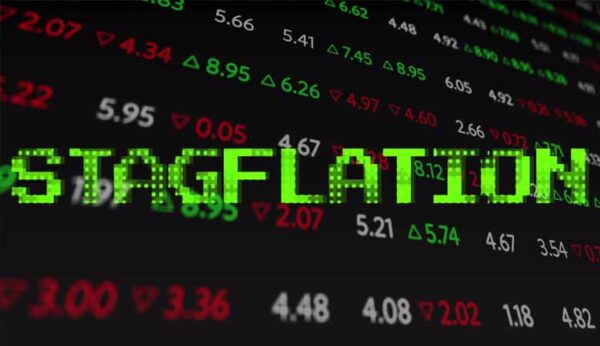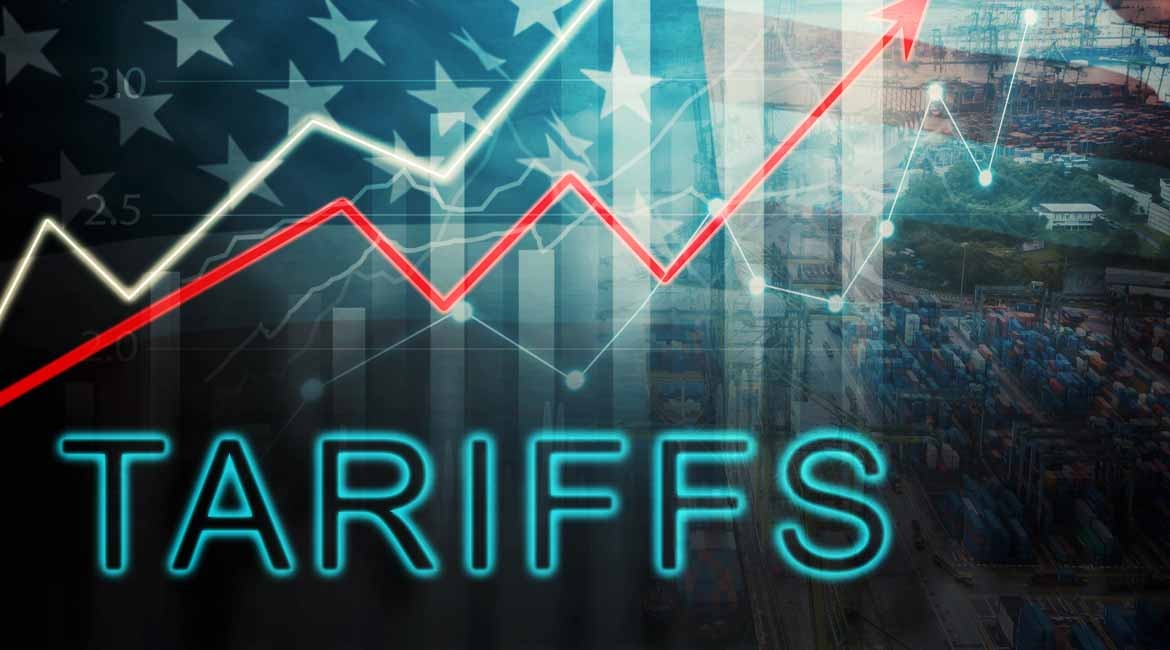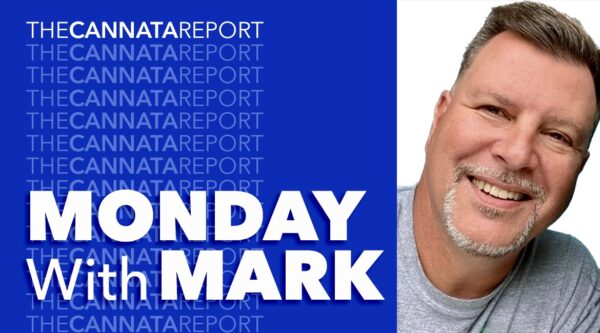The term stagflation combines the words “stagnant” and “inflation.”
Stagflation meaning: the term stagflation combines the words “stagnant” and “inflation.” Stagflation is an economic condition characterized by slowing economic growth, high unemployment, and rising prices (inflation) simultaneously. Historic periods of U.S. stagnation were the Great Depression of the 1930s and the rest of the period lasting until World War II. The United States has not experienced one sustained period of stagflation since gasoline shortages more than 50 years ago (1973-75), according to financial services firm Empower Advisory Group, LLC of Colorado.
While some of the Trump administration’s tariffs have been rescinded or delayed, the ones currently in place still amount to a tax increase close to 1% of GDP (assuming they are kept in place for the rest of this year). This means significant effects on both growth and inflation. In this sense, the tariffs are similar to other supply shocks that have adverse effects on both growth and inflation. The Federal Reserve’s response will depend, in part, on two factors:
- the relative magnitudes of these two effects (growth and inflation)
- the extent to which the rise in prices is viewed as a one-time event or something that seeps through into inflationary expectations and price-setting behavior.
In recent remarks, several members of the Federal Open Market Committee (FOMC) have indicated that they are considering an easing of monetary policy as soon as their meeting in June. This suggests that concerns about the impact of the tariffs on growth are starting to take priority.
Inflation data from the first quarter indicate that conditions were falling in place for an easing even before the tariffs kicked in. The Consumer Price Index fell 0.1% in March and was barely changed after excluding food and energy. The Employment Cost Index and other measures of wage inflation also have shown steady deceleration.

Anticipating Tariffs, Office Machine Imports Rose 64%
The first quarter GDP data showed a contraction of 0.3%. Imports of goods surged by 51% on an annualized basis. This is an exceptionally large increase and reflects efforts by businesses and consumers to get ahead of the tariffs. Some of this surge in imports showed up in inventories. However, it also appears to have been the case that consumption and business fixed investment shifted in the direction of imported goods during the first quarter. This reflects the anticipation by firms and consumers that imported products are about to become more expensive and more difficult to acquire.
The disruptive effects on the economy have yet to be fully felt. In the aftermath of the COVID-19 pandemic, many firms moved toward larger inventories. They stocked up further as they became aware of the threat of tariffs. This buys some time. By the end of the second quarter, however, it is likely that the economic data will show much greater effects from the tariffs (on both prices and economic activity) than has been the case so far.
A breakdown of the imports data by category is only available for January and February, but comparing those two months with a year ago gives some clues as to which sectors have sought to stock up ahead of the tariffs. The United States imports a wide variety of products, including many classified as advanced technology. Imports of advanced technology products surged by 40% in January and February. Within advanced technology products, imports of biotechnology products more than doubled and imports of products related to communications and information rose 50%.
Other categories (not necessarily involving high technology) where imports have surged in the first two months of the year include nonferrous metals (up 33%), office machines (64%), medicinal and pharmaceutical products (65%), and industrial supplies (57%). Curiously, imports of motor vehicles fell compared to the first two months of last year. The sectors where imports surged in the first quarter may have bought themselves some time before price increases and shortages appear. The precautionary stocking of imports may also indicate that those sectors are highly vulnerable to disruptions to regular trade patterns.
The supply shocks of the 1970s gave rise to the word stagflation. Stagflation refers to an economy where growth is stagnant or negative, but inflation is on the rise. The shocks of the 1970s were courtesy of the Organization of the Petroleum Exporting Countries (OPEC) and the Iranian Revolution. The stagflation of 2025 is self-administered. The stagflation scenario forces the Federal Reserve to weigh unpalatable choices. It could ease monetary policy and accommodate higher inflation in an effort to minimize the rise in unemployment. Or, the Fed could keep policy relatively tight to avoid higher prices feeding through to inflationary expectations.
The very favorable price and wage inflation data released in April provide some reassurance that tariff-related price increases can be contained and that a broader inflationary contagion can be avoided. These favorable data probably contributed to several Fed officials saying that they are open to an easing of monetary policy at their June meeting. This now appears to be the most likely course of action, with additional cuts in rates to come in the second half.
Ongoing energy price declines (the price of crude oil is down $20 per barrel since mid-January) also work to reassure the Fed that a broader outbreak of inflation can be avoided. The drop in energy prices signals that the market is assessing that demand for oil and natural gas is going to be weak during the rest of this year. The markets for oil and natural gas are global. And the outlook for the global economy has indeed dimmed considerably.




